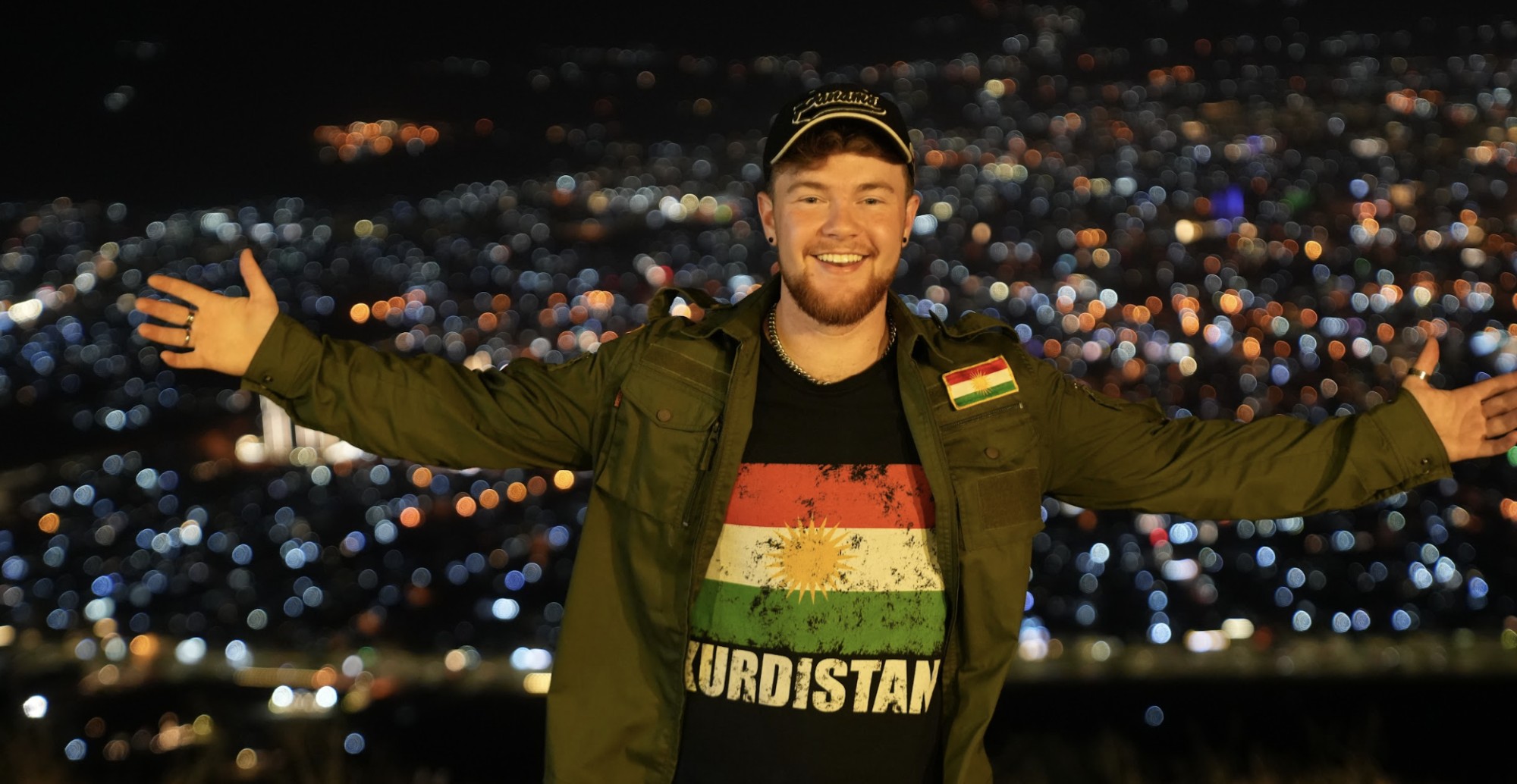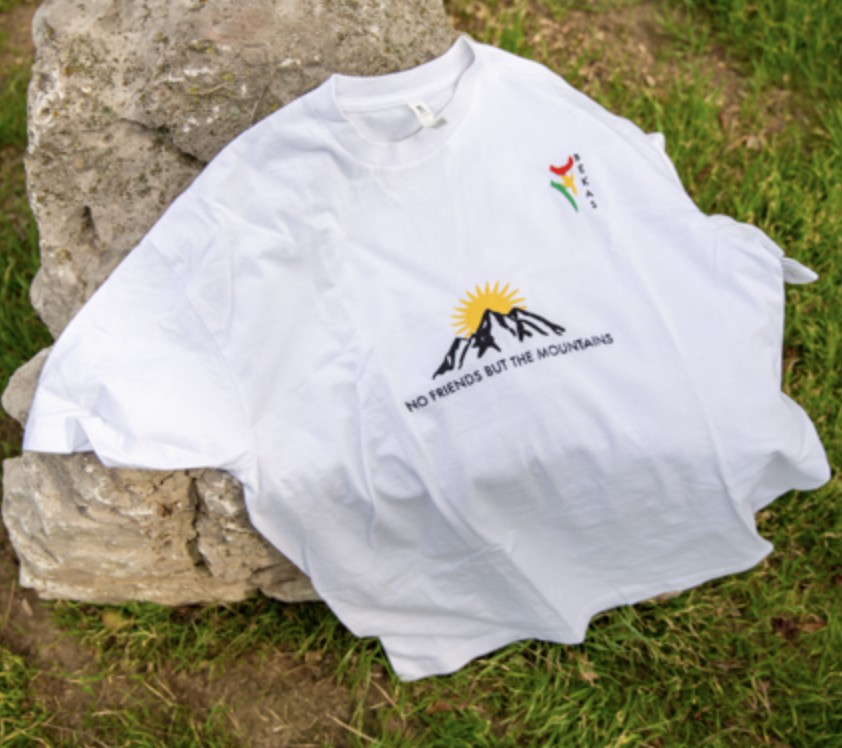Originally from Batman, Turkey, Ahmet Güneştekin is now a renowned artist in Istanbul, where he operates from his own Güneştekin Art Studio in Beyoğlu. In addition to the many books and articles written about him, Güneştekin has been featured in several catalogs, with his art also being the subject of numerous scientific and artistic theses. His works have been showcased in prestigious galleries such as the Marlborough Gallery, the Santa Maria Della Pietà, the Galerie Michael Schultz, and the Pilevneli. He became well-known in the field of contemporary art in Turkey and across the world with his artistic productions including Sun Road, The Chamber of Immortality, The Alphabet of Memory, Memory Chamber, and Infidel Quarter. He is currently preparing to open an exhibition in Venice next year either as part of the biennial or simultaneously alongside the event. In 2024, the Moscow Museum of Modern Art will also exhibit his work, while the art refinery, which is under construction in the Urla district of İzmir and will operate under the Güneştekin Foundation, is planning to be fully operational this year.
Speaking to Kurdistan Chronicle, Güneştekin shares that Lalish is one of the most important references of his work, saying, “I collect sounds and words from my own time. I’m interested in lost pasts, lost lives, and lost people that great histories arrogantly ignore.”
This interview with Güneştekin explores his artistic journey, his exhibitions, his upcoming plans, and his ideas on the evolution of contemporary art.
“I have adopted an interdisciplinary approach”

Kurdistan Chronicle (KC): You are the son of a family from Batman, Turkey, and you now speak to the world with your artistic productions. How has this city and your family shaped your work?
Ahmet Güneştekin: When I think about how time has shaped me, I return to the city and people of my childhood. It was there that my story begins, where I first started to perceive the world of sound as created by dengbêj** performances. I always thought of the world as a connected whole. When I looked at the examples of prehistoric artistic production across different geographies, the similarities that I saw confirmed this thought. I also aimed to look at these common denominators that transcend time. A work of art should be able to withstand the erosion of time. Therefore, I sought to transform my experiences and my own resources into artistic forms that would capture this essence. I began the search from my own world, from the playgrounds of my childhood, the dengbêjs, and later the sacred places such as Lalish and Göbeklitepe, which is the oldest temple of humanity. This process, which I deepened with field studies, extended to making stylistic experiments in my first workshop that I opened in Beyoğlu. I started to interpret mythology with contemporary art forms. I have also adopted an interdisciplinary approach while contemplating and working on pieces. My relationship with the surface I work with, my artistic production, and my way of thinking emerged from here. The world I was born in and what its people have given me will always be with me wherever I go.
KC: The sun motif stands out in most of your works; I can even say that it is like your signature. We Kurds attribute holiness to the sun. This can be seen in the flag of the Iraqi Kurdistan Regional Government, which depicts a sun with 21 rays. What would you like to say about the bond you have with the sun and the sun motifs in your work?
Ahmet Güneştekin: We live on a globe revolving around the sun, embedded in the circularity of the horizon. One must look passionately at the same planets and stars at different times, think of their similar forms, wonder about the existence of other suns, and always imagine that a larger circle is possible. This is how I can describe my most basic relationship with the sun. Circularity constitutes the basic organizational form of many primary monumental structures scattered all over the world. For example, in my sculptures in the Sunstone Series that I have been working on recently, I refer to megalithic structures with circular appearance, which I interpret as temples representing the sun. I look at these structures as faith spaces designed in the shape of the sun. This is the origin of the spiral elements that you see as forms in my work. The sun showed me the way to connect the rituals of primeval times with modern times. Maybe that's why I look for monumental artifacts made of the oldest stones. I accept the materials of the world as they are. What I want to do by processing natural stone formations is to reveal the materiality, essence, and identity of the stone, and I can do this by bringing it closer to the sun.
“Contemporary art and mythology share a similar language”
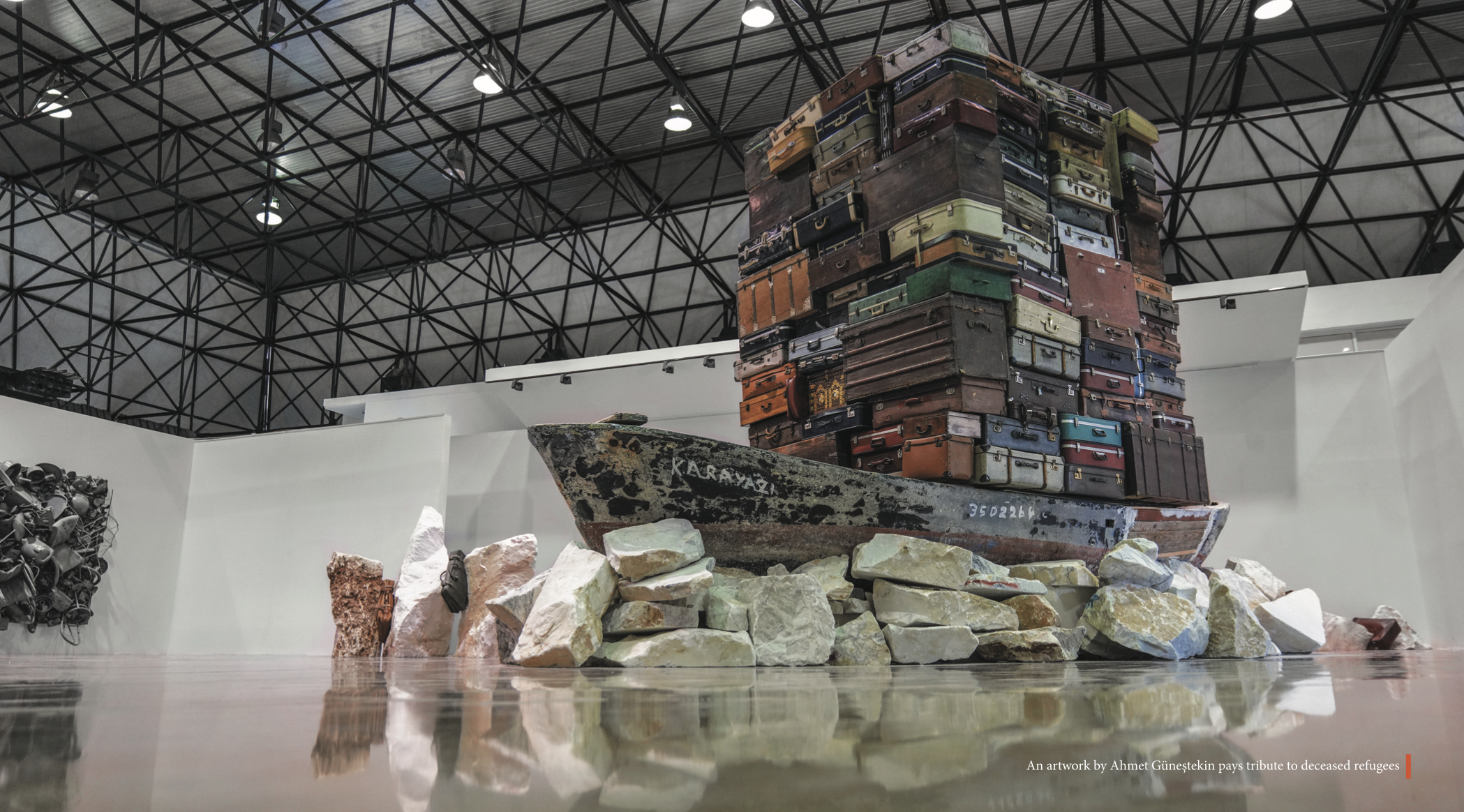
KC: We see sections from Kurdish, Anatolian, and Greek mythology in your work. What is the relationship between mythology and art?
Ahmet Güneştekin: Contemporary art and mythology share a similar language. Contemporary art either encodes or decodes meanings, just like myths do. Mythology is as much a method as it is stories of our search for meaning. For this reason, the variables that connect myth and artistic production work through symbols. I produce with what I can carry from these tales to today. Myths always demand reinterpretation according to today's ideas. Thanks to this flexibility, they can be adapted to any time, context, or culture. In my opinion, this deconstruction that characterizes myth enables people to connect with their subconscious memory today, as it did in the past, and derives its power to convey meaning from here. That's why studies of mythology can belong to every moment, not just their own moment, encouraging one to reflect on languages and reminiscences that are shared collectively.
KC: Güneştekin Art Studio, where you make and exhibit your productions, overlooks the so-called Golden Horn. Is this a coincidence or a conscious choice?
Ahmet Güneştekin: After leaving Batman and settling in Istanbul, I opened my first workshop in Beyoğlu. It was a radical change for me and a threshold I had to cross, as museums and galleries were noticing my work. Thus began a period when my art productions were visible to the rest of the world. It may not be a coincidence that I settled in this city, especially in the Golden Horn region, but it was not a conscious choice either. In one of the founding legends of the city, it is said that the name Golden Horn comes from the golden horns of Io, after she was turned into a cow. This city was home to some of the world's most resilient theocracies, led Christianity to become a world religion, disillusioned several caliphs, and then embraced the longest Caliphate in history. It is a city that has become a cosmopolitan metropolis with its colorful demographic structure, where different ethnic elements come together and fuse in every period of history from ancient Byzantine to today's Istanbul. It does not respond to an ideal designed with a thought that is not cosmopolitan, homogeneous, or built without visible differences. It's in its cultural genetics. When I opened my first workshop and afterwards, my art productions and working style were in line with this view. Today, we are experiencing the negative consequences of policies that can be defined as urban crimes in many social and cultural areas, but I think the owners of this city will have an answer to these crimes sooner or later.
“The variety of materials and mediums that I choose create the difference among my works, but it does not change the fundamental trajectory of the art I produce.”
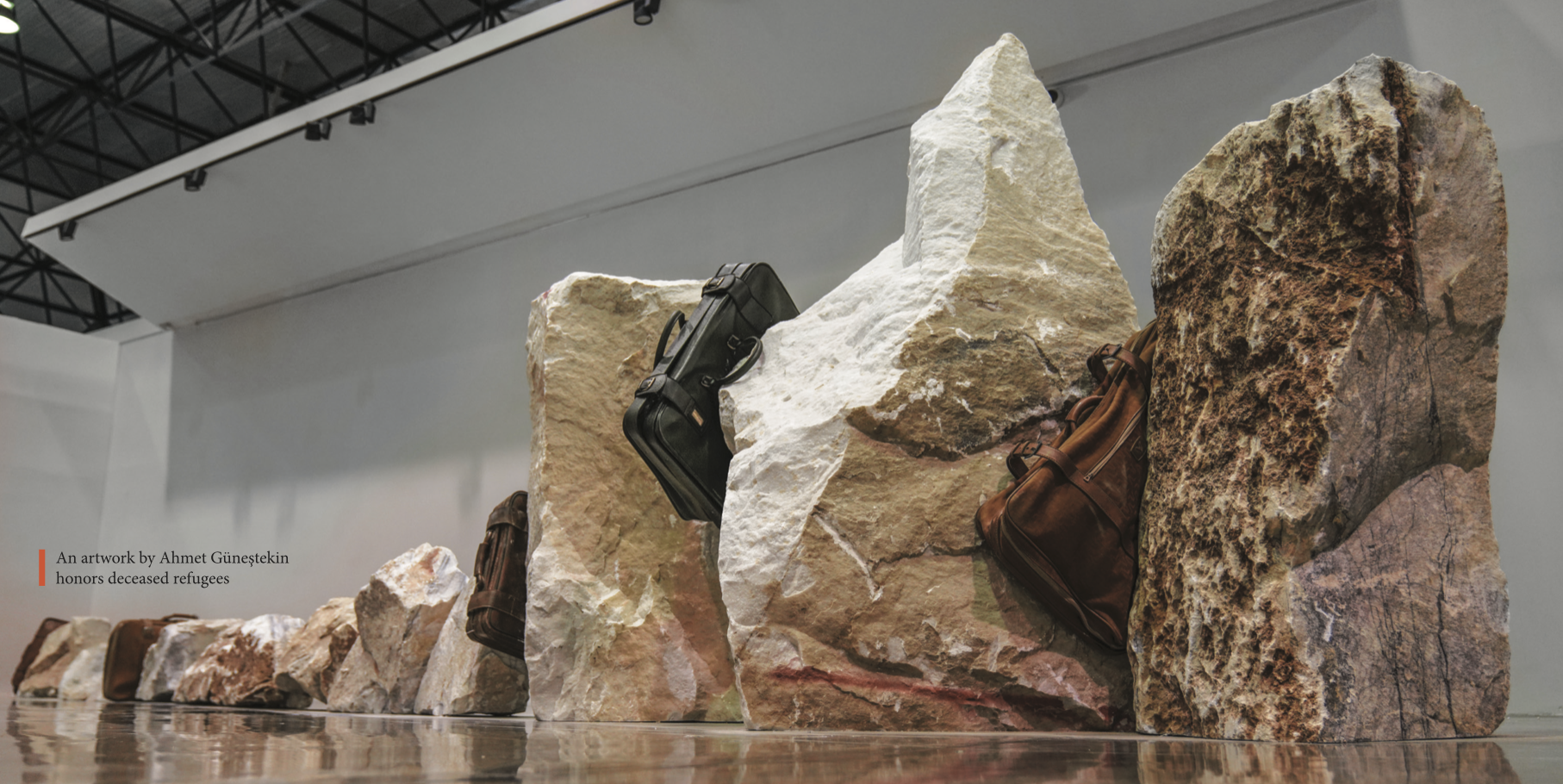
KC: You have made canvas paintings, ceramics, installations, sound installations, and video art. So, in terms of contemporary art, did you use so many different forms to avoid repetition or is there another reason for this?
Ahmet Güneştekin: I think that the field of interpretation emerges because of the compromise between light and matter. This is where elements of abstraction and myth enter the patterns in my work. I want these relationships to continue when I apply my artistic practice to a completely different set of materials. I am constantly looking towards applications that expand the range of acceptable artistic materials beyond traditional materials. Let's look at the works in the Memory Chamber exhibition that opened in Diyarbakır and the exhibition policy that was applied. We arranged the layout of the works in five main sections. In the first part, installations titled Lost Alphabet, You Weren’t Here, and Man Is Not a Flying Bird were exhibited, in the second section, Memory Hill, and in the third section, a compilation titled No.5 consisting of neon letters. Four words glow in four different neon colors on the walls of a dark tunnel with a narrow, low ceiling. The sound installation titled How are you?, which can be heard along the tunnel, is linked with this work as well. In the two rooms at the end of the tunnel, the videos Memory and Language are shown. After the Decay video shown at the end of the tunnel, the space opens to an area at the top of the Goat Bastion, where the installation of the same name is displayed. The light and sound scenarios we applied here aim to bring these works that I completed in different environments closer together, show how they overlap with current memory politics, and create counter-images to mainstream narratives. Here I wanted to create a nonverbal thought experience. I used whatever environment and tools were appropriate for this. The variety of materials and mediums I choose create the difference among my works, but it does not change the fundamental trajectory of the art I produce.
“Memory is full of cracks, selective, produces silences, and embedded in current political relations as a field of struggle.”
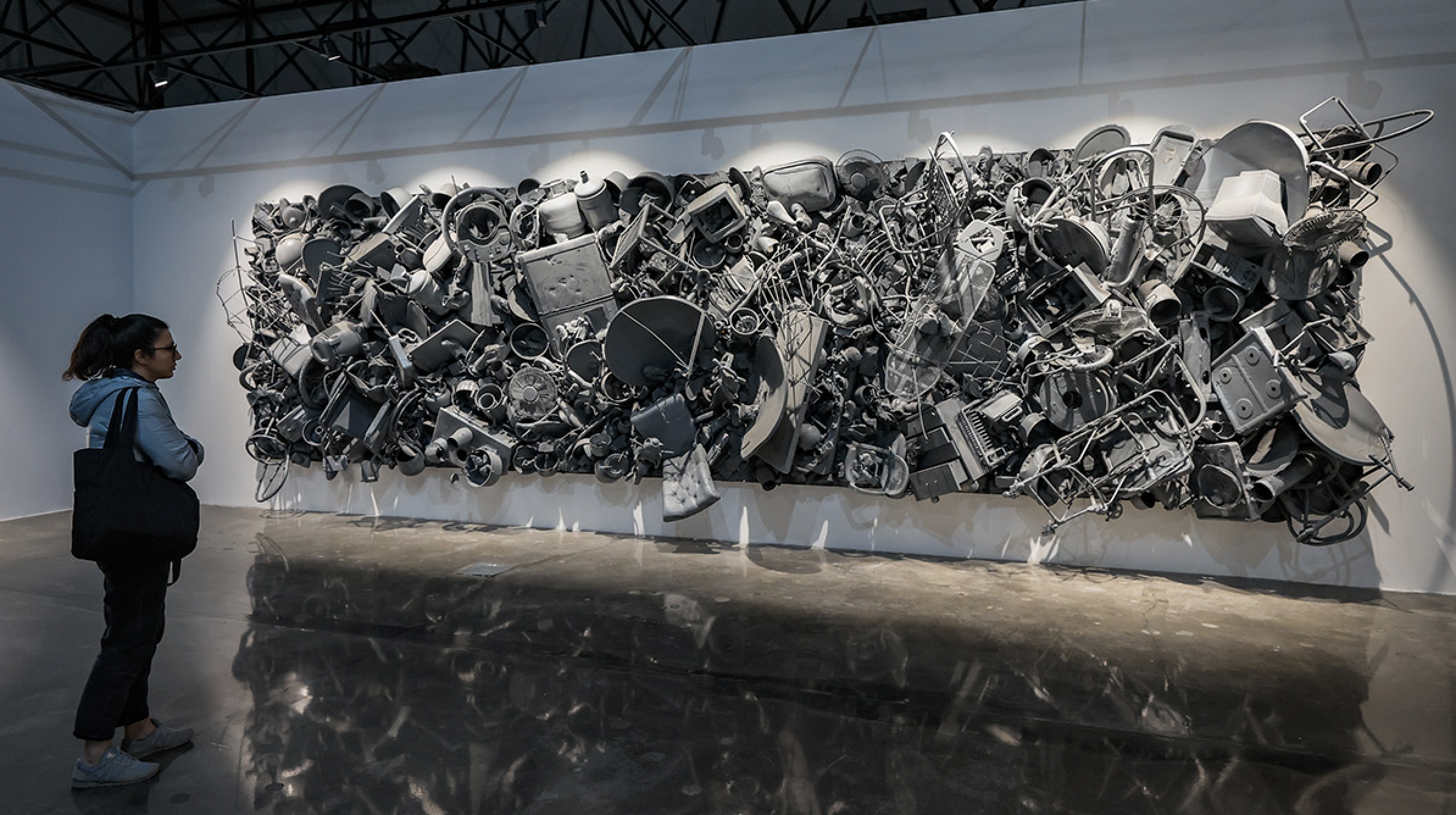
KC: The names of your last two exhibitions are Memory Chamber and Infidel Quarter. Why did you choose these names? What kind of relationship do you have with memory? Also, what is this Infidel Quarter, where is it and who lives there?
Ahmet Güneştekin: In the novel Infidel Quarter, Mıgırdiç Margosyan tells the reader about his childhood in this neighborhood in Diyarbakır where non-Muslims once lived. I can say that this naming is valid for all neighborhoods of Anatolia where non-Muslims live. I built the exhibition on the concept of inclusive multiculturalism as described by Margosyan. This concept does not mean living side by side without touching each other, but the acceptance of the cultural practices of different groups by the wider culture. While working, I mostly think about how to connect the present to the past and how to establish an experience-laden view. I think that memory is full of cracks, selective, produces silences, and embedded in current political relations as a field of struggle. Forgetting is as much a part of power relations as remembering. It is very difficult to categorize the social events that are the sources of trauma in the geography we live in. But you must start somewhere. Working on exhibitions that focus on interrupted social memory, such as the Memory Chamber and Infidel Quarter, is an effort to establish such a connection with the past.
KC: There are those who like your work, others who dislike it, and even those who criticize you harshly. What do you think causes your art to be so loved and criticized at the same time?
Ahmet Güneştekin: I collect sounds and words from my own time. I’m interested in lost pasts, lost lives, and lost people that great histories arrogantly ignore. For example, while the Memory Chamber exhibitions brought people with different ideas together, some of their implicit conflicts were made more visible. Each exhibition has its own specific context. I started working on this exhibition by asking the question of who will decide how the past will be remembered. We need to talk and narrate a past that has not yet been resolved and has not experienced any confrontation. Everything that happens disappears when not expressed. The works exhibited in the Memory Chamber witness an absence and tell a history born out of this absence. For me it was a work spanning the last twenty years. The exhibition was a place of encounter where I wanted to show the way to hear the voices of those who would otherwise remain unheard and forgotten. For this reason, I find it natural that the works I produce are the subject of criticism. It's unavoidable when you do things that are hard to think about but need to be discussed. I thought that my works in the Memory Chamber exhibition might open a way to confront an unresolved history. I think that all the discussions and criticisms that developed around the exhibition contributed to this effort in every way.
“Lalish is an important reference of my work”
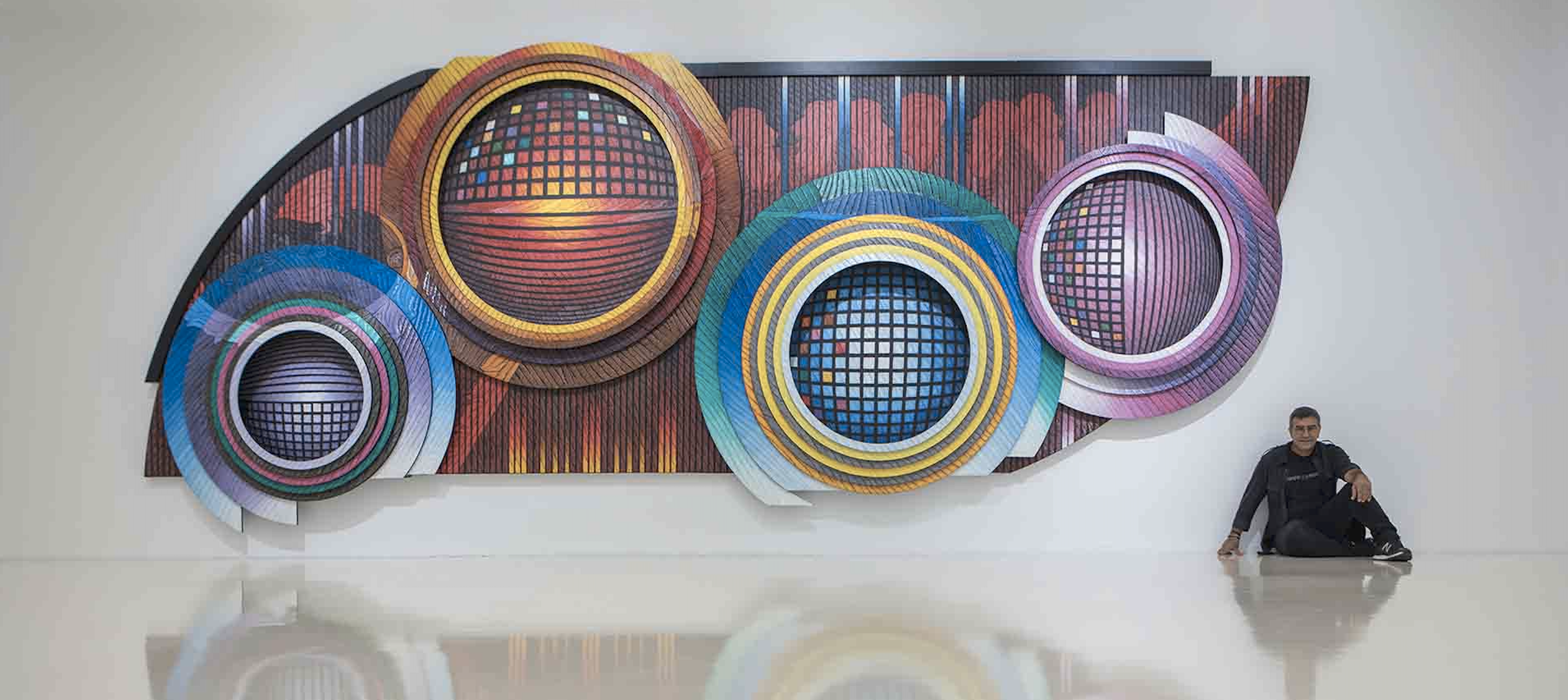
KC: Your works have been exhibited in important galleries such as the Marlborough and the Pilevneli. Did you also have an exhibition in Southern Kurdistan (the KRI)? If so, how was the response of our people to your work?
Ahmet Güneştekin: In the past, I was invited to several culture and art platforms, for film screenings too, but it was not possible to work on a comprehensive exhibition as I wanted it to be. I went to the Duhok Film Festival as a jury member and for the screenings of my films. There I planned as many research-oriented trips as possible. I have visited the holy temples of Yazidis in Lalish many times. It has been one of the important references of my work. The snake figure you see on the relief at the entrance of the Chamber of Immortality represents the black snake figure on the right side of the temple door.
KC: We know that there are people who criticize you both positively and negatively, but there are comments that the interventions in your exhibitions in Diyarbakır and Izmir preclude these criticisms. What do you think about this?
Ahmet Güneştekin: It was not possible for the interventions we experienced in every field to bypass the world of culture and art. The forms of these interventions show us the ways in which freedom of expression is restricted today. Recently, intervention mechanisms such as censorship, especially in the field of contemporary art, aim to intimidate, prevent, target, and isolate artistic expressions and their spread. Creating an atmosphere of fear and anxiety constitutes the philosophy of governing the cultural sphere as well as many other areas of power. We witness arbitrary and inconsistent practices, from decisions to recall exhibition catalogues and the restriction of the circulation of funded films to the premature termination of exhibition screenings. The notion of social sensitivity is used to justify attacks on freedom of expression in art. At the center of all these discussions is the issue of who gets to decide what art is and how it should operate. Yet, cultural capital is not earned by saying “we determine it.” An area is constructed and when the boundaries of this defined area are exceeded, silencing begins. I think that the decision to close the Memory Chamber exhibition in Diyarbakır 25 days early at the request of the Ministry of Culture and Tourism is the result of such an effort to silence it. What the Memory Chamber and Infidel Quarter exhibitions say from a broad perspective is that it is necessary to make room for counter-memory that defies the official discourse and to develop solidarity with the fragmented memories of the past. They show that there is no single collective memory, but that memory works only in combat with its own alternatives. When the exhibitions are interfered with, the meaning produced does not disappear but becomes more widespread.
“An artist derives his power from his inner freedom.”
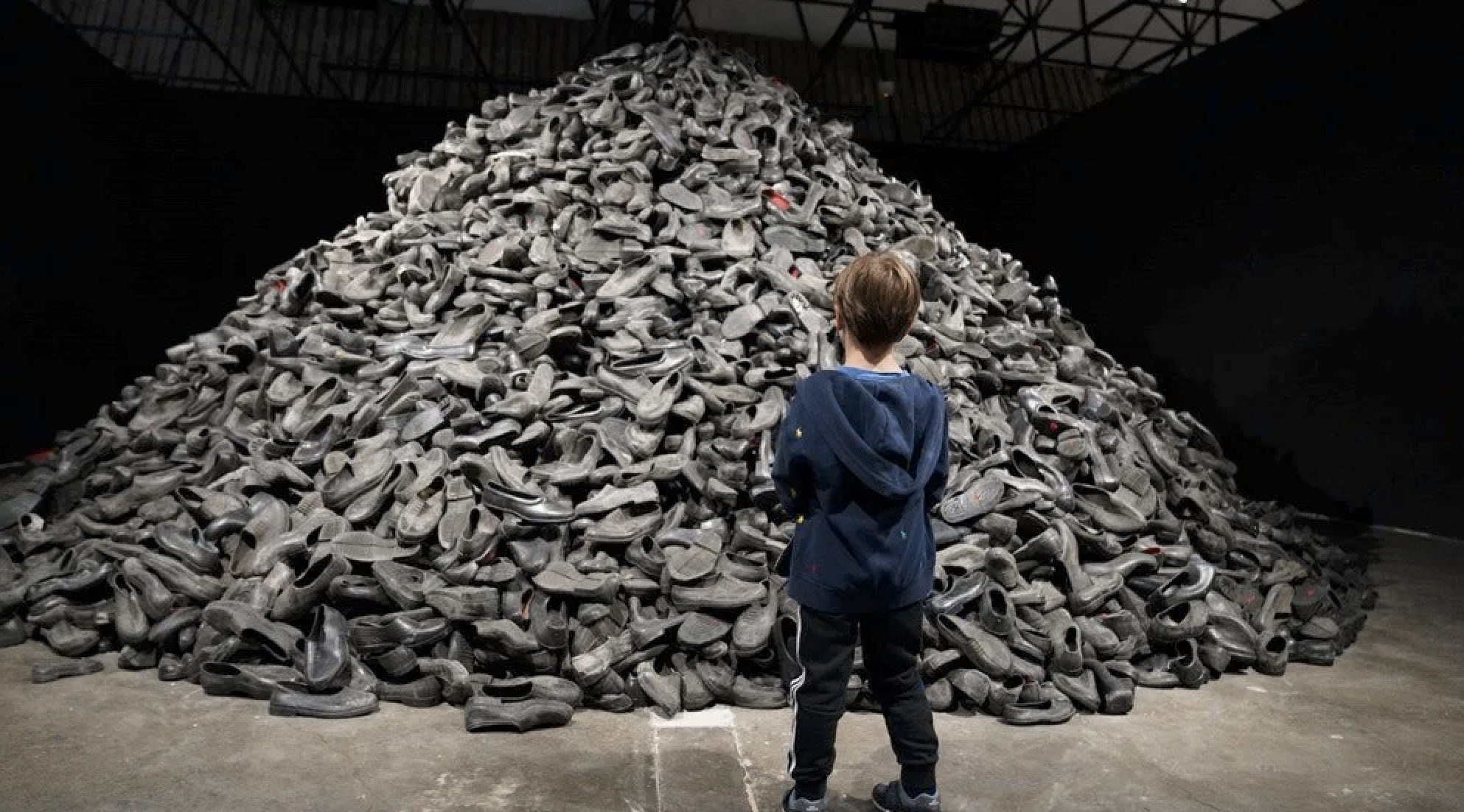
KC: From time to time, state dignitaries also attend the openings of your exhibitions. Do you have a relationship with the government? Do you not criticize the government, or do they attend your exhibitions despite your criticism?
Ahmet Güneştekin: In my artistic practice, I have not had an institutional collaboration with the powers that be, but I have collaborated with local governments for some of my major exhibitions. It is not possible for me to work with any argument other than the idea that art is for people. I know people with very different traditions of thought, and this naturally reflects in the openings of my exhibitions. For me, the artist derives his strength not from the power structures or art institutions on which he is based, but from his inner freedom. Of course, we think and produce through the regimes of knowledge we learn, but where we position ourselves as artists and how we preserve subjectivity is the crux here. In the world of art, it is possible to have some privileges to the extent of being associated with institutions and value judgments. Whether these are explicit or implicit, they are never free. The main thing for me has been to apply my own unique perspective both during the production phase and while determining the exhibition policies.
“Contemporary art exhibitions want to disturb the peace of dominant narratives.”

KC: When you compare your exhibitions abroad with your exhibitions in Turkey, how does the reception differ??
Ahmet Güneştekin: Based on my observations, I can say that my exhibitions in Turkey have a multinational audience like those abroad. The audience has a very attentive, open-minded, and questioning outlook. Contemporary art exhibitions are places that are constantly under construction, where different meanings and narratives are produced with each exhibition and new screening; they want to disturb the peace of dominant narratives. I want to be able to establish a space for a genuine encounter with the other, a contact area where objects as well as intangible stories can circulate. For example, I know that many objects in exhibitions on migration accompany people at a short but very important moment in their lives. In my works on migration, I see both people and objects as producers of common experience. Therefore, while working, my priority has been to encourage different forms of encounter between objects, environments, and visitors. I thought of this exhibition as a way of genuine encounter, of revealing the exclusionary practices that continue. In conclusion, the comments have shown that this community of work, in which I have worked in a variety of mediums and formats, can foster multi-sensory experiences.
KC: When contemporary art is mentioned in Turkey and even around the world, Kurdish artists come to mind along with international artists. What do you think is the reason for this?
Ahmet Güneştekin: This situation must be due to the way that artists relate to the historical world in which they live. I think that the statements made over the concept of the other reflect neither the world we live in nor the human spirit. However, geographical and cultural kinships can produce common associations for those who work with the past looking through such a fragmented present. It is possible to find out the reasons why they are more visible on contemporary art platforms by looking at the common points of their works. Whatever means of expression is chosen, the productions intersect with the politics of memory and can create images against mainstream narratives. Naturally, works that focus on social memory and rights violations make artists more visible and audible. The quantity, quality, and multi-layered nature of the social events that create trauma in the geography in which we live are an added variable to this situation.
KC: In your opinion, what is the current state of contemporary art in Kurdistan, Turkey, and around the world, and how will the rise of artificial intelligence affect its health?
Ahmet Güneştekin: Freedom of expression, the richness of the language of expression, as well as the intertwining of all disciplines, define contemporary art no matter where it is practiced. Today, we see that the main approach in all arts is the ability to act within the boundaries of each other. The idea comes first. According to the suitability of the concept to be conveyed, the material and the expression are formed. In parallel with this, I can say that the approach in art production in Turkey has been shifting from traditional materials and methods to conceptual studies for a very long time. We have a dynamic art world where artists who can develop an original and new language stand out. In recent years, important thresholds have been crossed not only in art production, but also in meeting and interacting with the audience. We see a cultural space transforming with the opening of major exhibitions, museums, and biennials. On the other hand, the artistic idea we know is beginning to evolve towards new concepts that have emerged with advanced technological developments. Recent developments allow artists to construct their creations based on phenomena such as algorithms and artificial intelligence. What will be the space that the digitalized culture will reach? Is it merely aiming to reach the ideal of becoming more and more superhuman? Is it all about transcending the world that limits creativity and imagination? Will it be possible to explore new and endless possibilities with an algorithm, and what will we gain from recreating the human both conceptually and mentally? Discussions are developing around these questions. In my opinion, trying to conceptualize artificial intelligence as an artist's brain makes the concept of subjectivity, which is very important for today's art, debatable. In every age, man has used the possibilities of the period he is in to overcome his biological limits. Man acted with the urge to experience every possibility in the field of art. Of course, it would be exciting if this emerging new possibility would expand our traditional ideas, understandings, and even perceptions of the world.
KC: What are you working on at the moment, and do you have any exciting projects planned for the future?
Ahmet Güneştekin: We are working to open an exhibition in Venice next year as part of the biennial or simultaneously with it. In 2024, the Moscow Museum of Modern Art will exhibit my works. We are building an art refinery in Izmir’s Urla district, which will operate under the Güneştekin Foundation. In addition to these, there may be some exhibitions planned for the Asia Pacific region, which are still developing.
Mevlüt Oğuz: Born in 1987 in Batman’s Hasankeyf, Mevlüt Oğuz is a journalist, poet, and activist working in the field of civil society and culture and arts, who resides in Istanbul. He he is a member of the International Federation of Journalists (IFJ), the Kurdish PEN affiliated to International PEN, and the Istanbul branch of the Human Rights Association (İHD).
**Dengbêj: Dengbêj is a Kurdish music genre or a singer of the music genre dengbêj. Dengbêjs are singing storytellers. The word deng means voice and bej means to sing.
